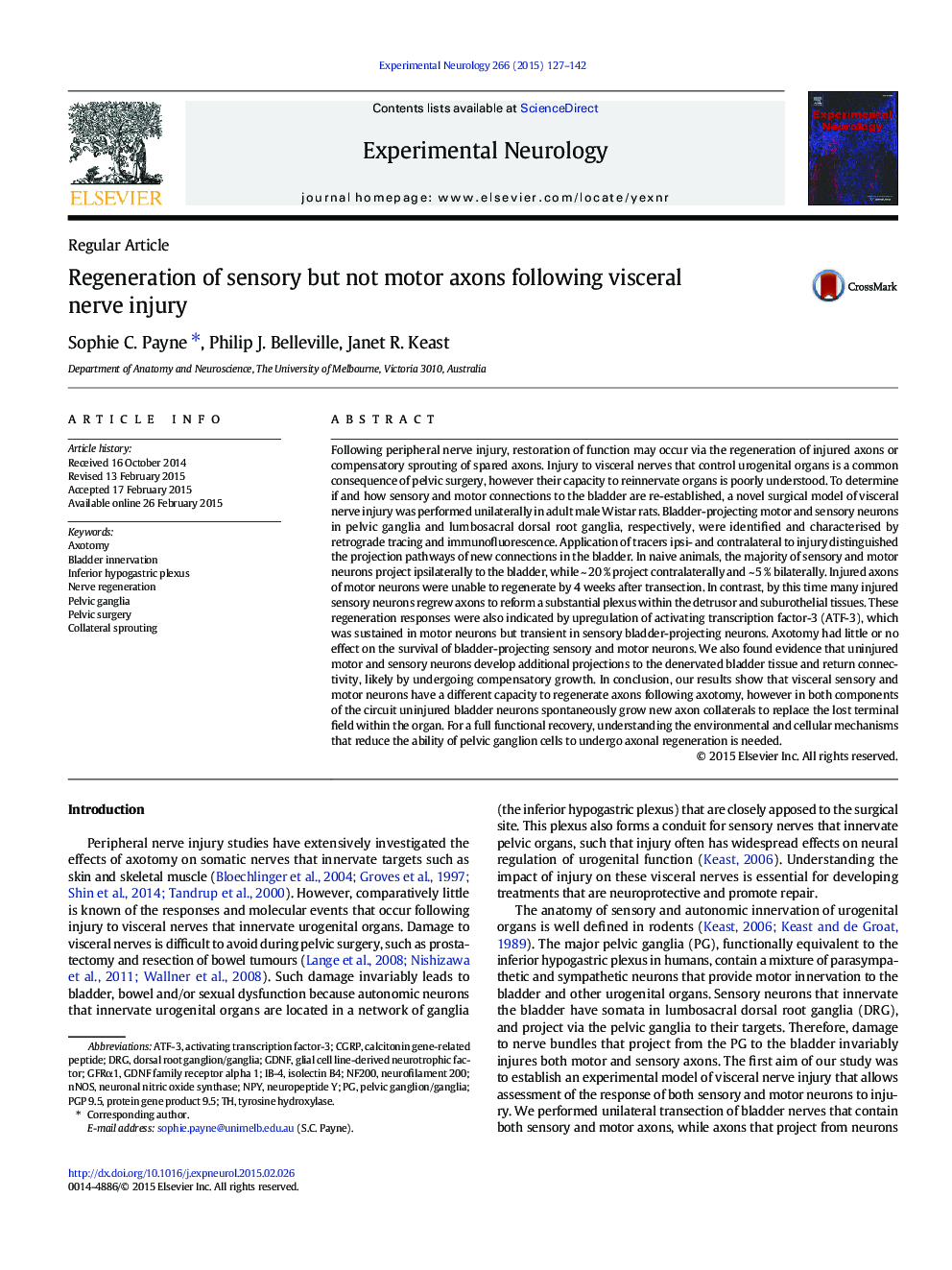| Article ID | Journal | Published Year | Pages | File Type |
|---|---|---|---|---|
| 6017449 | Experimental Neurology | 2015 | 16 Pages |
Abstract
Following peripheral nerve injury, restoration of function may occur via the regeneration of injured axons or compensatory sprouting of spared axons. Injury to visceral nerves that control urogenital organs is a common consequence of pelvic surgery, however their capacity to reinnervate organs is poorly understood. To determine if and how sensory and motor connections to the bladder are re-established, a novel surgical model of visceral nerve injury was performed unilaterally in adult male Wistar rats. Bladder-projecting motor and sensory neurons in pelvic ganglia and lumbosacral dorsal root ganglia, respectively, were identified and characterised by retrograde tracing and immunofluorescence. Application of tracers ipsi- and contralateral to injury distinguished the projection pathways of new connections in the bladder. In naive animals, the majority of sensory and motor neurons project ipsilaterally to the bladder, while ~Â 20 % project contralaterally and ~Â 5 % bilaterally. Injured axons of motor neurons were unable to regenerate by 4Â weeks after transection. In contrast, by this time many injured sensory neurons regrew axons to reform a substantial plexus within the detrusor and suburothelial tissues. These regeneration responses were also indicated by upregulation of activating transcription factor-3 (ATF-3), which was sustained in motor neurons but transient in sensory bladder-projecting neurons. Axotomy had little or no effect on the survival of bladder-projecting sensory and motor neurons. We also found evidence that uninjured motor and sensory neurons develop additional projections to the denervated bladder tissue and return connectivity, likely by undergoing compensatory growth. In conclusion, our results show that visceral sensory and motor neurons have a different capacity to regenerate axons following axotomy, however in both components of the circuit uninjured bladder neurons spontaneously grow new axon collaterals to replace the lost terminal field within the organ. For a full functional recovery, understanding the environmental and cellular mechanisms that reduce the ability of pelvic ganglion cells to undergo axonal regeneration is needed.
Keywords
neurofilament 200dorsal root ganglion/gangliatyrosine hydroxylase.GFRα1PGP 9.5DRGNF200ATF-3nNOSGDNFCGRPNPYInferior hypogastric plexusaxotomyisolectin B4Nerve regenerationCollateral sproutingneuronal nitric oxide synthasePelvic surgeryGlial cell line-derived neurotrophic factorActivating transcription factor-3calcitonin gene-related peptideprotein gene product 9.5Pelvic gangliaNeuropeptide Y
Related Topics
Life Sciences
Neuroscience
Neurology
Authors
Sophie C. Payne, Philip J. Belleville, Janet R. Keast,
